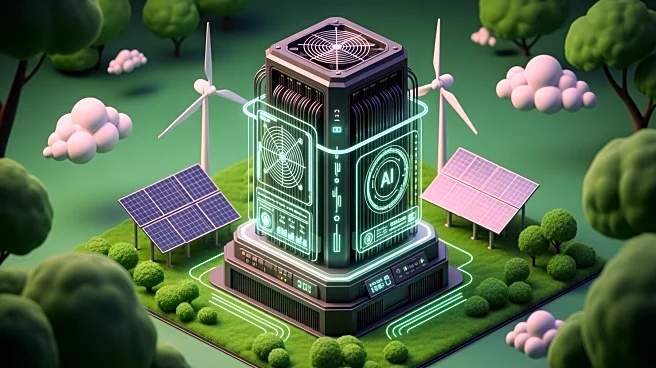What's Happening?
Researchers are exploring the potential of two-dimensional (2D) materials to enhance renewable technologies. These materials, particularly MXenes, have shown promise in converting air components into ammonia,
a crucial element for fertilizers and transportation fuels. The study, published in the Journal of the American Chemical Society, highlights the ability of MXenes to be fine-tuned for various applications, offering a sustainable alternative to traditional electrocatalyst materials. The research, led by Drs. Abdoulaye Djire and Perla Balbuena, aims to expand the understanding of catalyst design beyond the type of metal used, focusing on the atomic properties and vibrational behavior of these materials.
Why It's Important?
The development of MXenes as a renewable energy solution could significantly impact industries reliant on ammonia, such as agriculture and transportation. By providing a cleaner method of ammonia production, this technology could reduce dependency on fossil fuels and decrease environmental pollution. The ability to fine-tune these materials for specific applications also presents opportunities for cost-effective and efficient energy solutions, potentially leading to advancements in green chemistry and sustainable practices.
What's Next?
Further research into MXenes and their interactions with polar solvents through Raman spectroscopy could lead to major advancements in green chemistry. The ultimate goal is to achieve atom-by-atom control of energy conversion processes, which could revolutionize the production of chemicals and fuels from earth-abundant resources. Continued support from institutions like the U.S. Army Research Office may drive this research forward, potentially leading to practical applications in the near future.
Beyond the Headlines
The exploration of MXenes challenges traditional beliefs about catalyst design, offering a new perspective on the role of atomic properties in chemical reactions. This research not only contributes to the field of materials science but also opens up possibilities for innovative approaches to energy conversion and sustainability.











